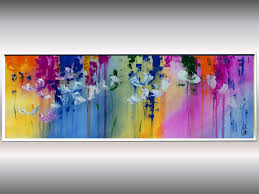The Beauty of Acrylic Art: A Guide to Understanding and Appreciating this Versatile Medium
Acrylic art has gained immense popularity in the art world for its versatility, vibrancy, and durability. Artists across the globe have embraced acrylics as a medium that allows for endless creativity and expression. Whether you are a seasoned artist or a beginner looking to explore new artistic horizons, acrylic art offers a world of possibilities.
What Makes Acrylic Art Unique?
One of the key characteristics of acrylic paint is its fast drying time, which allows artists to work quickly and layer colours with ease. This makes acrylics ideal for both detailed work and bold, expressive brushstrokes. The ability to manipulate the paint’s consistency also adds another dimension to acrylic art, as artists can create textures ranging from smooth and glossy to thick and impasto.
Techniques in Acrylic Painting
Acrylic art offers a wide range of techniques that artists can explore. From traditional methods such as glazing and dry brushing to more experimental approaches like pouring and palette knife painting, there is no limit to the ways in which acrylics can be used. Artists can also mix acrylic paint with various mediums to achieve different effects, such as adding texture paste for three-dimensional elements or using glazing medium for translucent layers.
The Advantages of Acrylic Art
One of the main advantages of working with acrylic paint is its versatility. Acrylics can be used on a variety of surfaces, including canvas, paper, wood, and even metal. They are also known for their lightfastness and permanence, making them a durable choice for artists who want their work to stand the test of time.
Exploring Acrylic Art
Whether you are drawn to abstract expressionism, hyper-realism, or anything in between, acrylic art offers endless possibilities for artistic exploration. With its vibrant colours, quick drying time, and ability to adapt to various techniques, acrylic paint is a medium that rewards experimentation and creativity.
So why not pick up a brush and some acrylic paints today? Dive into the world of acrylic art and discover the beauty and excitement that this versatile medium has to offer.
“Maintaining Your Tools: Effective Methods for Cleaning Acrylic Paint Brushes”
3. “Creative Fusion: Mixing Acrylic Paint with Different
- What are the advantages of using acrylic paint?
- How do you clean acrylic paint brushes?
- Can you mix acrylic paint with other mediums?
- What surfaces can acrylic paint be used on?
- How long does it take for acrylic paint to dry?
What are the advantages of using acrylic paint?
Acrylic paint offers a multitude of advantages that make it a preferred medium for artists of all levels. One key advantage of using acrylic paint is its fast drying time, allowing artists to work quickly and efficiently. This characteristic enables layering and blending colours with ease, making it ideal for both detailed work and bold, expressive brushstrokes. Additionally, acrylic paint is known for its versatility in terms of application on various surfaces such as canvas, paper, wood, and more. Its lightfastness and permanence ensure that artworks created with acrylics will maintain their vibrancy and integrity over time. Furthermore, the ability to manipulate the paint’s consistency and texture adds another dimension to acrylic art, allowing artists to explore a wide range of techniques and styles.
How do you clean acrylic paint brushes?
Cleaning acrylic paint brushes is an essential task to maintain their quality and longevity. To clean acrylic paint brushes effectively, start by rinsing them in warm, soapy water to remove excess paint. Gently massage the bristles to loosen any dried paint. For stubborn residue, use a brush cleaner or mild solvent specifically designed for acrylic paints. Avoid using harsh chemicals that can damage the bristles. Once clean, reshape the bristles and allow the brushes to air dry thoroughly before storing them upright to prevent damage. Regularly cleaning your acrylic paint brushes will ensure they remain in top condition for your next artistic endeavour.
Can you mix acrylic paint with other mediums?
Yes, acrylic paint can be easily mixed with other mediums to enhance its characteristics and create unique effects in artwork. Artists often experiment with mixing acrylic paint with mediums such as gel medium, texture paste, pouring medium, and glazing medium to achieve different textures, finishes, and levels of transparency. By combining acrylic paint with these mediums, artists can expand the possibilities of their artwork and explore a wide range of techniques that add depth and complexity to their creations. Mixing acrylic paint with other mediums allows artists to customise the consistency, sheen, and drying time of the paint, opening up a world of creative possibilities for artists of all levels.
What surfaces can acrylic paint be used on?
Acrylic paint is a versatile medium that can be used on a variety of surfaces, making it a favourite among artists for its adaptability. Common surfaces for acrylic painting include canvas, wood, paper, fabric, metal, and even plastic. The key to successful acrylic painting on different surfaces lies in proper surface preparation to ensure adhesion and longevity of the artwork. Whether you are creating a masterpiece on canvas or experimenting with acrylics on unconventional materials, the possibilities are endless when it comes to exploring the potential of acrylic paint across diverse surfaces.
How long does it take for acrylic paint to dry?
Acrylic paint is known for its relatively fast drying time compared to other paint mediums. The exact drying time of acrylic paint can vary depending on factors such as the thickness of the paint layer, humidity levels, and the brand of acrylic paint used. In general, acrylic paint dries to the touch within 20-30 minutes, allowing artists to work quickly and efficiently. However, it is important to note that acrylic paint fully cures and becomes completely dry within 24 hours. Artists can also use additives like retarders or extenders to slow down the drying process and manipulate the drying time according to their preferences.

